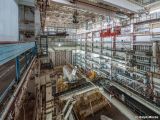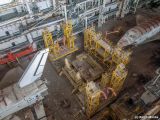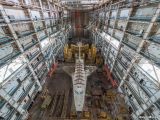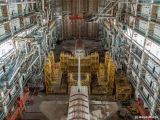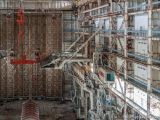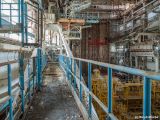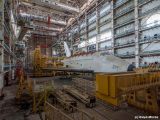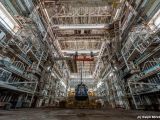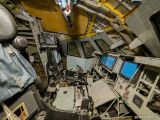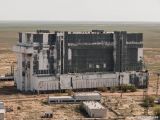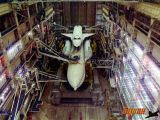Russian photographer and urban explorer Ralph Mirebs managed to enter one of the abandoned Buran Soviet Space Shuttles hangars in Baikonur. What he captured is probably one of the saddest images of human space exploration.
Placed at Baikonur Cosmodrome in the middle of the Kazakh steppe, the great hangar called Site 112 was built to house the massive N1 moon rocket, now housing the crypt of two Buran shuttle prototypes in an advanced state of decay.
The Soviet's Buran program lasted from 1974 to 1993, and it managed to complete only one automated orbital flight before funding stopped when the Soviet Union collapsed in 1991.
Being very similar to NASA's VAB (Vertical Assembly Building), the two shuttles were designed to be each connected to the massive Energia launchers at Site 112 and then brought to Site 110, which was basically the dedicated launching pad for Buran-class takeoffs.
Site 110, just as Site 112, was purpose-built for launching the N1 moon rocket and it also later converted to serve the Burans.
Unfortunately, the massive debris and dust gathered on the two shuttles was the result of the roof collapsing in 2002. The two Burans have been exposed to the elements outside ever since.
One of the two shuttles is the OK-1K2, which was ready for spaceflight in 1992. It was about to make a second flight in automatic mode and dock with the Mir space station. The other one is a mock-up for load tests.
Their future fate is unknown, but it is likely they'll stay forever locked in a hangar exposed to dust and sand in the Kazakh desert, as the dream of the soviet shuttle program will remain forever forgotten.
Check out the gallery below for more photos captured by Ralph Mirebs on the spot.
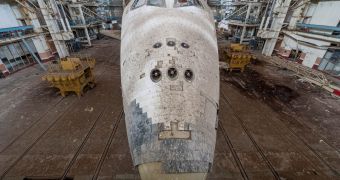
 14 DAY TRIAL //
14 DAY TRIAL // 
